Future Smart
Budget 2022 is the first building block in a twenty-five-year plan for an unprecedented makeover of India
 Haseeb Drabu
Haseeb Drabu
 Haseeb Drabu
Haseeb Drabu
 Anil Padmanabhan
Anil Padmanabhan
 |
04 Feb, 2022
|
04 Feb, 2022
/wp-content/uploads/2022/02/Smartfuture.jpg)
(Illustrations: Saurabh Singh)
IN THE RUN-UP to this year’s Union Budget, the popular expectation was that politics would dictate economics, given that the first round of voting in the first round of the key elections to the Uttar Pradesh (UP) Assembly was less than a fortnight away. To the contrary, Finance Minister Nirmala Sitharaman passed up on what was otherwise a perfect opportunity and instead presented a Budget sans any freebies and grandstanding. One which, if anything, reflected her imprimatur: dutiful, diligent and dependable.
This was not the only surprise. The finance minister’s speech was over in 90 minutes—the shortest in recent memory. Even better, the opposition passed up the opportunity of a high profile, most watched event like the Union Budget, and listened without their customary disruptions.
In her post-Budget interview with Doordarshan, Sitharaman shared the secret as it were. Prime Minister Narendra Modi had a simple advisory for his finance minister: the Budget should say what it has. “And that is what we followed,” Sitharaman added.
The realistic budgetary numbers, be it the revenue figures or fiscal deficit or borrowings, bear this out. There is greater transparency, which restores the sanctity of the Budget.
The Budget may seem to lack the glamour of big-bang reforms, but the plethora of no frills and fancy initiatives has a lot of punch and potential. It is a continuation of last year’s “once in a hundred years budget”, seeking to consolidate the gains from it for India@100.
Clearly, the National Democratic Alliance (NDA) in its 10th Budget has acquired a quiet confidence in its own abilities. One which could afford to spurn the need for validation. Instead, it believes that the facts will speak for themselves. Unlike the mantra in Indian politics where it has rarely been about what you are doing; instead, it is about what you are seen to be doing.
In a dialogue, often the unsaid is important. In this instance, the latter is turning out to be more important. NDA has quietly signalled that this year’s Budget is the first building block in a 25-year plan for an unprecedented makeover of India. Something that will enable the country to legitimately own its place at the global high table, grabbing the opportunity provided by the disruption in the global world order with the simultaneous play of a China-US-led West rivalry on the one hand and a once-in-a-century pandemic which refuses to fade way.
This New India is to be built over the next 25 years on the foundation of inclusivity guaranteed by the newly laid digital rails—lending voice to the idea of a stakeholder economy.
Elaborating her case, Sitharaman said, “This Budget seeks to lay the foundation and give a blueprint to steer the economy over the Amrit Kaal of the next 25 years—from India at 75 to India at 100.”
At its very core, in terms of substance, it is the traditional Budget which had gone out of fashion: expansionary in action and redistributive in purpose. This year’s Budget is also signalling that after two years of repair and mitigation to offset the pandemic fallout, India is finally transitioning to recovery.
THE GROWTH MANTRA
IN LINE WITH the emerging policy consensus across the globe, in this Budget public investment is intended to be the driver, catalysing private corporate investment in the core sectors with the hope that the two in tandem will be enough to stimulate consumption demand and generate an adequate number of jobs.
With a 35 per cent hike in its own capital outlay, along with grants-in-aid and interest-free financing of capital projects to state governments, it is as big a capital spend package as there can be. The capital expenditure to GDP ratio, which not so long ago was 2.5 per cent, has been budgeted at 4.1 per cent.
Given the existing incremental capital output ratios, this level of public expenditure, especially on the capital expenditure side, should generate a GDP growth of 13 per cent-plus. Yet, perhaps accounting for the global headwinds, a strong commodity price cycle, the hardening bond yields, rising interest rates and the real possibility of imported inflation, the growth rate has been pegged pragmatically at 11 per cent. Another way would be to see the “output gap” as a buffer to dampen the inflationary pressures.
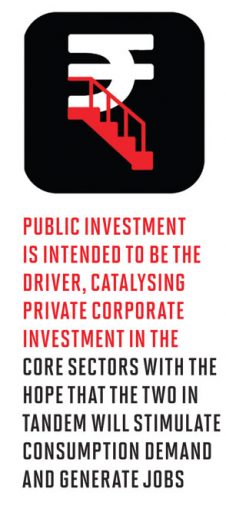
Even so, purists may see the fiscal stance of the Budget as excessively expansionary; but it is not an irresponsible one. In fact, it is a responsible Budget in so far as the economy is concerned. It must also be factored in that the finance minister has been emboldened to spend more by the trends in revenue collections. Buoyed by the Goods and Services Tax (GST) collections, the finance minister is betting on growth to finance her spending and balance the Budget.
And as the Economic Survey for 2021-22, released a day earlier, pointed out, Sitharaman has not hesitated in recalibrating the fiscal priorities in response to the challenges. Implicitly, NDA has demonstrated what the Survey characterised as the “agile approach” as opposed to sticking to past precedent and practice. In short, a flexible strategy to deal with a situation like the Covid pandemic wherein mitigation efforts by public policy are like hitting a moving target—one of trial and error.
“The Agile framework is particularly relevant today because of the explosion of real-time data that allows for constant monitoring. Such information includes GST collections, digital payments, satellite photographs, electricity production, cargo movements, internal/external trade, infrastructure roll-out, delivery of various schemes, mobility indicators, to name just a few. Some of them are available from public platforms but many innovative forms of data are now being generated by the private sector. Short-term policy responses, therefore, can be tailored to an evolving situation rather than what a model may have predicted,” the Survey argued.
Having done her bit by taking a decisively expansionary fiscal stance, for the finance minister’s plans to fructify on the ground, corresponding action on two fronts will be required: monetary policy of the Reserve Bank of India (RBI) and investment plans of India Inc.
By continuing the fiscal stimulus, the Government has done the right thing. In fact, the stimulus package has been tweaked a bit. There is a slight but significant difference; in the first two Budgets, the structure of fiscal stimulus was current expenditure-based. Largely relief and rehabilitation transfer payments geared towards creating consumption demand.
This time round, the stimulus is in the form of capital expenditure. This is an important nuance that the finance minister has brought into the stimulus package.
Being an investment-based stimulus, it will generate in the first round demand for basic, capital and intermediate goods which will in turn engender consumption demand which is not only low but also slack at the moment.
This strategy stands to reason. Having stabilised the consumption demand in the short run and continuing to do so, albeit at a lower level, it makes sense to look for generating sustainable consumption demand in the near future or medium term. Hence the emphasis on public investment.
This underlying macroeconomics of the Budget will hinge on three important players: the central bank, commercial banks and corporate India. In other words, what New Delhi has proposed, Mumbai will dispose!
First, RBI. In an overall environment of inflation, in particular global trends, and a hardening interest rate regime indicated by the bond market, will RBI risk having an accommodative, if not expansionary, monetary policy aligned to the fiscal policy in the Budget? It will be a tough call to take.
So too will be ensuring that the Government’s large borrowing programme does not crowd out private investment in the short run.
Indeed, the growth arithmetic of the Budget is predicated on the assumption of a crowding in of private investment in the medium term. But for that to fructify, managing the short-term crowding out from the financing side will need to be navigated with care and diligence.
Although it would be surprising if RBI did not support the Government’s policy, how it will do so will be critical. Announcing such a massive borrowing programme could have been done only after taking on board the Mint Street decision-makers. As such, how well the Budget pans out can be concluded only after RBI plays its hand.
Second, depending on what RBI does and how, the commercial banks will work out their credit policies. If the credit lines to the corporate sector are reopened, only then is the game of growth afoot.
Over the last three years, the corporate sector, for a variety of reasons, has deleveraged significantly. So there is not just headroom but a noticeable shortage in the supply of credit to the commercial sector, in particular the corporates.
Third, if this constraint is eased, the corporate sector is rearing to play ball and kick off its investment cycle. India Inc will first supplement and then substitute public investment over the next three years.
As a matter of fact, the biggest threat that can waylay the Budget is the credit deficit and not the fiscal deficit. Not enough recognition is nowadays being given to the quality of the fiscal balance sheet of the Union Government. Two years ago, in 2020-21, the revenue deficit was well over 7 per cent. This year, it is at sub-4 per cent levels. Effectively, the revenue deficit is about 2.6 per cent. The primary deficit reduction is equally sharp.
The only jarring figure is the composition of the erstwhile non-Plan revenue expenditure; interest payment alone accounts for 42 per cent of the revenue receipts. With the borrowing programme being what it is, interest payments will only increase further.
PPP 2.0
THE STRATEGY underlying the growth projections of the Budget is premised on a ramping up of capital investment in the economy. The logic is very simple: capital expenditure, as estimated by a recent report published by RBI, has a multiplier ratio of 3.25—that is, every investment of ₹ 1 results in creating thrice the amount in economic demand. And in this, the biggest absorber of capital investment is infrastructure.
Essentially, the strategy seeks to kill two birds with one stone. On the one hand, a ramping up of capital expenditure means accelerating economic growth. And on the other, it also means a rapid replacement and supplementing of India’s sell-past-the-date infrastructure—which has the additional benefit of solving supply-side bottlenecks, the key reason driving the current round of inflation.
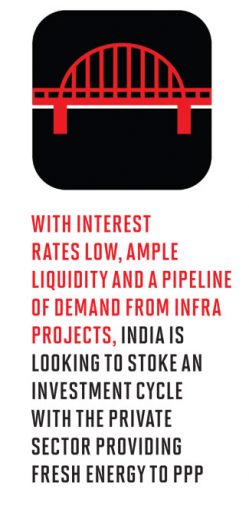
The strategy, as laid down in the Budget, is for the Union Government to play the lead for now—especially given the unique circumstances created by the scarring of the economy in the aftermath of the Covid-19 pandemic, which had dodgy origins in Wuhan, China. The expectation is that India Inc would take the cue to exploit the commercial opportunity. With interest rates low, ample liquidity and a guaranteed pipeline of demand from a range of infrastructure projects, India is looking at a perfect storm for stoking an investment cycle with the private sector as a key partner—providing fresh energy and substance to the idea of PPP or the Public-Private-Partnership model.
“Relying on virtuous cycle starting from private investment with public capital investment helping to crowd-in private investment,” Sitharaman explained in her Budget speech.
Explaining the potential of this strategy, the finance minister pointed out that the applications received for availing the Productivity Linked Incentive (PLI) scheme made available for 14 sectors had the potential to create 60 lakh new jobs, and an additional production of ₹ 30 lakh crore during next five years.
The problem as some analysts point out is that the bind is no longer about adequate funding for such long-gestation, big-ticket projects—which require lenders like pension funds with both deep pockets and an appetite for risk. Instead, it is one of having shovel-ready projects.
In a recent interview telecast on BloombergQuint, Vinayak Chatterjee, chairman of the Confederation of Indian Industry’s (CII) committee on infrastructure, said that indeed, while funding was no longer the constraint, the challenge was to ensure a steady pipeline of infra projects with all the clearances in place to absorb the funding.
“The conversation is soon going to shift to project pipeline, availability of shovel-ready projects and some very strong stimulus to create tomorrow’s projects. I see that as a potential bottleneck in the future as opposed to finance being the bottleneck,” Chatterjee said.
The finance minister, however, is confident that this won’t be a challenge. In the post-Budget interview with Doordarshan she dismissed it by saying, “I don’t think so,” and then added, “After the introduction of the National Infrastructure Pipeline (NIP), which was in end-2019 and early-2020, we have been adding a lot of projects to that list. Many states have come with well-designed projects which are going to move forward. Over and above this, there is also a keenness among states to compete for renewable energy-related projects. There are many states coming up with very doable projects.”
The Union Government had launched NIP in 2019 with an investment agenda of $1.5 trillion spread over six years. The initial list included 6,835 projects, which has since been expanded to over 9,000 projects covering 34 infrastructure sub-sectors. The sector-wise break-up and their share in total infrastructure projects is: energy (24 per cent), roads (19 per cent), urban (16 per cent) and railways (13 per cent).
CONNECTING INDIA
EVER SINCE NDA took office for a second stint, it has pursued connectivity infrastructure on mission mode. This was particularly with respect to building out the road network under the leadership of Road Transport Minister Nitin Gadkari.
Few would be aware that the road network in India of 63.71 lakh kilometres, made up of national and state highways and district, rural and urban roads, ranks a close second to the US. Under NDA, road-building per day accelerated from around 12 km in 2013-14 to 28 km in 2019-20. More recently, this pace accelerated to 36 km a day in 2020-21—it is like a road network connecting Delhi-Agra every week—after the Union Government stepped up funding.
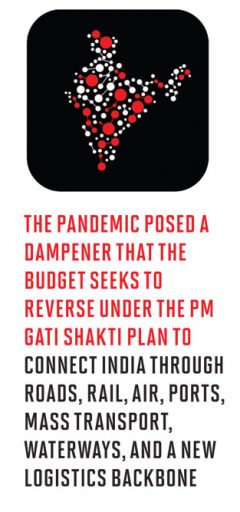
The onset of the pandemic posed a dampener however, something the Budget seeks to reverse under the ambitious PM Gati Shakti plan to connect India—through roads, rail, air, ports, mass transport, waterways, and a new logistics backbone.
“All seven engines will pull forward the economy in unison. These engines are supported by the complementary roles of energy transmission, IT communication, bulk water and sewerage, and social infrastructure. Finally, the approach is powered by clean energy and sabka prayas—the efforts of the Central Government, the state governments, and the private sector together—leading to huge job and entrepreneurial opportunities for all, especially the youth,” Sitharaman said in her Budget speech.
It will incorporate the infrastructure being developed by states and the projects commissioned under NIP to eventually create a seamless multimodal connectivity to improve the efficiency of logistics in the country.
“The touchstone of the Master Plan will be world-class modern infrastructure and logistics synergy among different modes of movement—both of people and goods—and location of projects. This will help raise productivity and accelerate economic growth and development,” Sitharaman added.
This will complement the various strategies already under implementation in various sectors. For instance, the National Rail Plan envisages a capacity expansion of the railway network by 2030—to accommodate traffic up to 2050. Consequently, the freight carrying capacity of the railways will grow from the present level of 4,700 metric tonnes (mt) to 8,200 mt by 2030. This is expected to improve the ability of the railways to enhance their share of total freight traffic to 40-45 per cent from the current level of 26-27 per cent.
In the instance of aviation, plans are already afoot to ramp up and modernise the network in the country, especially with domestic traffic more than doubling from 61 million in 2013-14 to 137 million in 2019-20. Emboldened by its experience with airports in the major metros of Delhi, Mumbai, Hyderabad and Bengaluru, the Government is actively pursuing privatisation of airports. Under the National Monetization Pipeline (NMP)—designed to generate funds for new infrastructure—25 airports, including Bhubaneshwar, Varanasi, Amritsar, Trichy, Indore, Raipur, Calicut, Coimbatore, Nagpur, Patna and Chennai, have been shortlisted for privatisation in the next three years.
The Maritime India Vision 2030 (MIV 2030), a blueprint to coordinate and accelerate growth of the country’s maritime sector, is already operational. It seeks to modernise existing infrastructure and develop world-class mega ports and trans-shipment hubs. The investment envisaged under MIV adds up to over ₹ 1 lakh crore—generating 1 lakh jobs and cost savings estimated at ₹ 7,000 crore per annum.
EMPOWERMENT VS ENTITLEMENT
THE FINANCE MINISTER is more than conscious that while there is a recovery on the output side, there has been no similar rebound as far as employment growth is concerned. No wonder, an employment generation number of six lakh has been committed to in the Union Budget. It is perhaps for the first time that there is a Budget estimate for employment in the Union Budget.
Even though Budgets can’t directly create employment, what the finance minister is seeking to do is not just bet on growth to deliver jobs but create conditions for employment generation. More importantly, it is being ensured through the structure of the public investment programme—high material and labour intensive—that employment-intensive growth gets engendered.
Much of the employment issue has arisen from and is concentrated in the informal sector which shrunk over the last five years. Indeed, the formalisation of the economy catalysed by the introduction of the GST regime resulted in a transitional disruption of the large informal sector. The change in the indirect tax regime put pressure on the informal sector as the supply networks got disrupted, making it unattractive for companies to source from the informal sector.
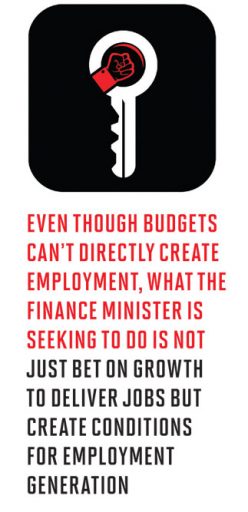
This transitional and expected imbalance had barely settled when the pandemic hit the globe. And the informal sector bore the brunt of the job loss and output decline in the post-Covid restrictions that have continued since.
With the GST regime now stabilising and the options like the reverse charge mechanism getting into the system, the revival in employment in the “modern” informal sector, like the ancillary segment, will get a structural push. While the traditional informal sector will get a big fillip through the investment programme in the construction sector.
This approach aligns with NDA’s ideological stance preferring empowerment to entitlement—teaching people how to fish rather than handing it to them. Over the last seven years, this strategy has worked to first address the legacy of deficits it inherited—wherein large tracts of the population were without basic material needs like drinking water, electricity and housing. Yes, while they were not officially poor—the last head count pegs them at 22 per cent, which is nearly the size of the entire population of the US—they are barely in a position to exploit the benefits of growth, let alone access the formal economy.
NITI Aayog, which recently released its numbers on poverty estimated using a multi-dimensional approach, revealed that large segments of the populace are continuing to struggle at or below subsistence levels—the key reasons for migration of labour from these states.
The stickiness of the staggering levels of poverty is disconcerting. In Bihar, for example, the latest data released by NITI Aayog pegs the percentage of poor in the state at 51.91 per cent—in other words, one in two people in the state are poor.
The onset of the pandemic only made a bad situation worse. The crisis exposed the state of the sell-past-the-date health infrastructure; people were dying because of lack of oxygen facilities in hospitals. A report by the Comptroller and Auditor General (CAG) estimated the shortage of clinical and non-clinical equipment at staggering 27.21 per cent and 56.33 per cent, respectively. The CAG data further revealed that the shortfall in personnel at various healthcare centres across the country is even more worrying: surgeons (86.50 per cent); gynaecologists and obstetricians (74 per cent); physicians (84.60 per cent); and paediatricians (81 per cent).
Keeping with this refrain, NDA is making a big push to ramp up healthcare infrastructure and simultaneously work to universalise basic needs like drinking water. Sitharaman has earmarked additional funding of ₹ 60,000 crore for drinking water (Har Ghar Jal). As she pointed out, of the 8.7 crore beneficiaries, 5.5 crore were added in the last two years since the project was launched. Another 3.8 crore people are targeted to receive drinking water in 2022-23.
The institutional network spread across the length and breadth of the country, over the last 75 years, has earned a lot of trust and contributed to the social capital of the country. The most reliable person in the village is the postman.
To deepen the ongoing programme of financial inclusion, the finance minister has said all the 1.5 lakh post offices would come under the core banking system. Quite apart from giving access to post office savings accounts through net banking, mobile banking, ATMs, and also providing for online transfer of funds between post office accounts and bank accounts.
This is an excellent example of leveraging an existing institutional network built over the last 100 years for bringing about transformation and change. Over the last 75 years, post offices, which are an integral part of the village civil society, have built a lot of trust and contributed to social capital at that level. This gamechanging initiative will take financial inclusion to another level by enabling interoperability.
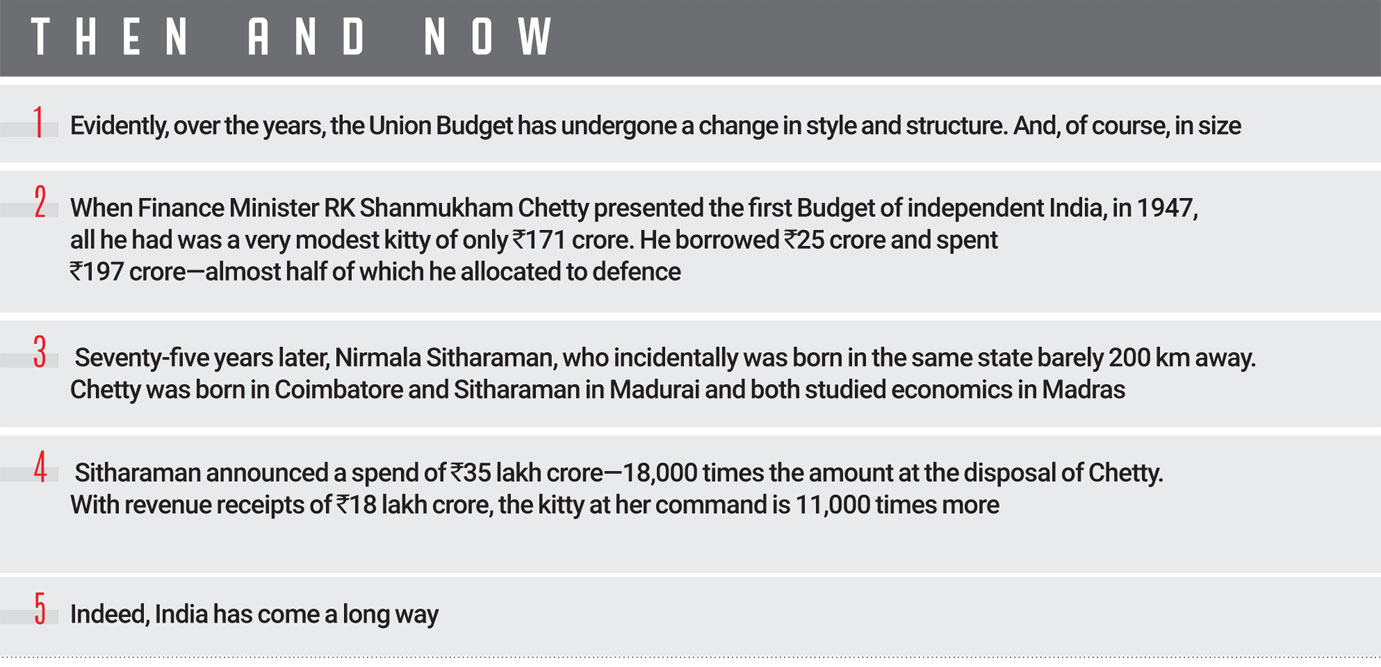
Meanwhile, unmindful of the setback caused by the rollback of the farm laws, NDA continued to press ahead with reforms in agriculture—by enabling ease of doing farming and aligning the conditions with the new playbook for the rest of the economy.
Accordingly, Sitharaman announced fresh measures in her Budget, including the promotion of chemical-free natural farming, use of drones for crop assessment and acceleration of the digitisation of land records.
Expanding on this, Prime Minister Modi, while addressing a gathering of the Bharatiya Janata Party (BJP) the day after the presentation of the Budget, stated that the Government will be launching an agricultural corridor, similar to the industrial and freight corridor.
The first such corridor will run along the Ganga across the states of Uttarakhand, UP, Bihar, Jharkhand and West Bengal. This corridor will be 2,500 km long and five km wide on either bank of the river. Not only will this serve to provide remuneration to the small farmers but chemical-free farming will reduce the discharge of harmful effluents into the river, the prime minister said.
MINDSET RESET
KEEPING WITH this refrain, the Budget continues to chip away at the prevailing mindset of a country long burdened by the challenges of underdevelopment—something which has eroded its self-belief. As a result, the mindset has turned out to be one of expecting rewards from the Government in the form of sops. If it is the poor then it is the promise of subsidised or free food, electricity; in the case of the middle class, most of whom draw salaries, the expectations were about tax concessions.
This is clearly a work in progress. The ongoing round of state elections holds a mirror to this challenge with most political parties seeking to woo voters with freebies and sops. NDA, on the other hand, led by Prime Minister Modi, has sought to hit the mindset reset by making a case that there is more to gain from a growing economy. Exactly the reason why NDA has pursued empowerment by creating an ecosystem wherein individual enterprise is incentivised to flourish.
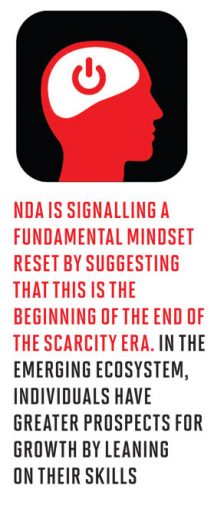
Sitharaman laid out NDA’s case while responding to a question on the neglect of the middle class in this year’s Budget: “I fully recognise that every section of society has suffered, the middle class has definitely suffered. But when we talk about the middle class, I understand, you understand, all of us understand, and each of us also perceive, that there is an element of middle class in us also and therefore we understand the element of suffering. Yet, we also belong to some other group.
“For instance, if you or your brother or your son start a startup, and he gets benefits, isn’t that middle class? If his children are going abroad and if I give them all the facilities to transfer money, for their education abroad and also give them a passport which is going to be futuristic and ensure that when they come back they can have a skilling programme, and I also make sure that high-class universities are set up in India, is that not addressing the middle class? And similarly, don’t we think that farmers are middle class? Will they not get benefits? Will we think that a person running an MSME is not middle class?” the finance minister argued in her post-Budget interview with Doordarshan.
NDA is signalling a fundamental mindset reset by suggesting that this is the beginning of the end of the scarcity era. In the emerging ecosystem, emphasising ease of doing business and living, an individual has greater prospects for growth by leaning on their skills than by depending on state support. Yes, given the inequities and circumstances, one section of India will need to be provided a backstop. It is similar to the process NDA adopted with cooking gas subsidy—it weaned off those who could afford to pay and limited the subsidy to only the poor.
SUPPORTING STATES
AFTER A ROUGH beginning with states in the GST Council which had soured the federal relationship, the finance minister has reached out to the states by recognising their need for long-term financing of capital expenditure. Sitharaman, for the first time, has made available ₹ 1 lakh crore interest-free loans to states for a 50-year period. This comes on top of the higher borrowing limit of 4 per cent which includes 0.5 per cent for power reforms. How this facility is designed will determine its efficacy.
This move sets the stage for a renewed cooperation between the Centre and the states which have borne the brunt of the pandemic. The finance minister is well aware that the Union Government will need the support and cooperation of state governments in executing capital works and projects across sectors.
Indeed, as spelt out in her post-Budget interview with Doordarshan, the finance minister was very clear that states have to ramp up their execution capabilities and push for infra development, especially in clean and green energy and sustainability of space, for which the Centre is ready to walk the extra mile.
GREEN INVESTING
IN ADDITION to this, the Centre has shown its commitment to the green economy by announcing the issuance of a sovereign green bond which is the first sovereign bond India has issued. The earlier ones, like the India Development Bond and the recent Sovereign Gold Bond, were not international issuances.
While details are awaited, it is expected that the Union Government will raise funds from fixed-income investors through the sovereign green bond and lend to or invest in projects that seek to mitigate climate change or help affected people adapt to it.
A sovereign green bond will go a long way in opening up and enlarging a large set of investors who, at the moment, are not looking at India as a green investment option. These green bonds will be an opportunity to invest in climate solutions through a high-quality credit fixed income product. As of date, the World Bank alone has issued approximately $17 billion equivalent in green bonds through over 200 bonds in 24 currencies.
Thus, the sovereign green bond proposed in the Budget will help stimulate and coordinate public and private sector activity to combat climate change. Also, it will be a cheaper and long-tenure financing of domestic green investments projects.
DIGITAL LEAPFROGGING
SIGNIFICANTLY, the finance minister made it clear that the transformation of India over the next 25 years will be achieved by leveraging the newly laid digital rails. NDA is emboldened after its recent history of successfully leveraging the digital backbone to deliver public services during the pandemic.
For instance, in March 2020, when the Union Government announced the first tranche of the Covid-19 relief package of ₹ 1.7 trillion, RBI kept the payment gateways open even though it was approaching a weekend. Once the payments were approved by the Government, these were transferred within two hours to the bank accounts of nearly 800 million beneficiaries—setting in motion probably one of the world’s largest social digital transfers in real time.
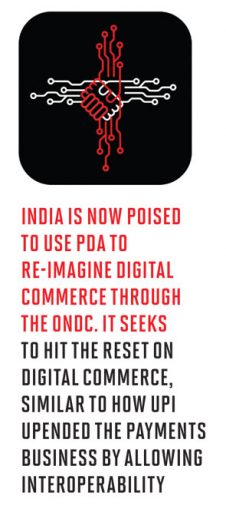
Basically, the Government leveraged the digital ecosystem which includes the one billion-plus mobile phone connections of which 400-600 million are smartphones, 600-800 million internet users, and the 430 million Jan Dhan no-frills bank accounts owned by the poor.
Not only did the money reach the beneficiaries in the shortest time possible, more importantly, it cut out the traditional middleman. This was enabled by uniquely identifying each beneficiary by using their personal data specs—built around their 12-digit unique Aadhaar. NDA was essentially harvesting the gains from the backing of Aadhaar—including fighting off the legal challenge which went up to the Supreme Court—and the scaling of its uses.
In this instance, the money transfer was enabled by the so-called homegrown India Stack, a technology stack which leverages four pillars:
› Presence-less (digital access and verification using Aadhaar);
› Paper-less (digital records allowing portability);
› Cash-less (one interface allowing for interoperable payments between bank accounts and wallets); and
› Consent (allows entities to access an individual’s data).
The unique feature of this technology stack, which also makes it a world-class product, is that it unpacks a solution as a modular digital block. The beauty is that each module can be juggled around and deployed for other functions too. This has been given a moniker: public digital assets (PDAs). They are like digital building blocks and based on open-source software and hence free for anyone, government or private sector, to use.
By unpacking a solution in modular terms, a PDA operates like a plug-n-play system. The subtext of this is that it defines the emerging era of Open Digital Ecosystems (ODE). This feature allows the digital building blocks to be mixed and matched to create customised and innovative digital solutions at scale to resolve development challenges like inclusion, social payments and, of course, the successful implementation of the ‘one nation, one jab’ programme using the CoWin platform.
India is now poised to use PDA to re-imagine digital commerce through the Open Network for Digital Commerce (ONDC). It seeks to hit the reset on digital commerce. Similar to how the open protocol Unified Payments Interface (UPI) completely upended the payments business by allowing for interoperability—wherein peers can pay each other in real time using any wallet as long as they are on the UPI network—at an extremely low transaction cost.
The ONDC seeks to democratise the way sellers and buyers connect with each other in digital commerce. At the moment, these cohorts engage on platforms that are closed and dominated by a few. Of the nine platforms in the world with billion-plus users, five operate from the US and the rest from China. Unlike these private platforms, ONDC promises to be a public network that will connect the existing platforms—very similar to the way UPI connected wallets. The promise of ONDC lies in its ability to solve the asymmetry of information and access that plagues existing e-commerce platforms.
These PDAs are powering the National Digital Health Mission (also called Ayushman Bharat Digital Mission), which Sitharaman announced is on the verge of being rolled out.
“An open platform, for the National Digital Health ecosystem will be rolled out. It will consist of digital registries of health providers and health facilities, unique health identity, consent framework, and universal access to health facilities,” Sitharaman said in her Budget speech on February 1st.
It will take affordable healthcare to those who need it, once again by employing a digital backbone. In short, it is India’s big fix of its sell-past-the-date health infrastructure. It will permit all those volunteering to opt for a unique digital health ID to enable portability of their medical history—at least, it will reduce the enormous friction for outstation patients seeking consultation through telemedicine or looking to tap specialists across the country—and a health registry of verified medical personnel.
One big collateral gain from enabling this transformation using a digital backbone has been the boost to disintermediation. Just as the launch of the ATM revolutionised customer experience with respect to banking, the new digital plays are cutting out the middleman—something that not only reduces friction but also eliminates or at least reduces the opportunity for middlemen to engage in corruption.
In the final analysis, it is clear that, as the finance minister said in her speech in Parliament, this year’s Budget is the first of many steps to spur an unprecedented makeover of India. Not since China did so in the 1980s has any country of this size attempted something similar. NDA believes that policy changes in both its terms are part of a grand plan to ensure no person is left behind.
Sitharaman summed it up best when she said, “Since 2014 our Government’s focus has been on empowerment of citizens, especially the poor and the marginalised. Measures have included programmes that have provided housing, electricity, cooking gas, and access to water. We also have programmes for ensuring financial inclusion and direct benefit transfers. We are committed to strengthening the abilities of the poor to tap all opportunities. Our Government constantly strives to provide the necessary ecosystem for the middle classes—a vast and wide section which is populated across various middle-income brackets—to make use of the opportunities they so desire.”
BEYOND THE BUDGETS: ETCHING AN ECONOMIC LEGACY
INTENT
With Finance Minister Nirmala Sitharaman presenting the 10th Budget (including the two vote-on-account) of NDA 2.0, it is possible to discern the underlying macro policy intent of the Modi Government. Within the context of all the mega initiatives like demonetisation and changeover to the GST regime, instrumentalities of the Budget have been used to drive the formalisation of the country’s economy. This distinctive push towards formalisation is comparable in its transformative impact to the liberalisation of the 1990s and globalisation in this millennium
Indeed, reflecting the imprimatur of Prime Minister Narendra Modi, the NDA Budgets have facilitated transitioning workers and transforming economic units—including enterprises, entrepreneurs and households—to the formal economy. This has been done by gradually changing the practice, processes and, most importantly, the priorities in the Budgets
While each individual Budget in the last eight years has put in place building blocks, collectively these have sought to evolve a new architecture for public expenditure policy and management. The 228 per cent hike in the grants-in-aid to Panchayats in the Budget of 2015 was, for instance, the biggest democratisation of public spending
The formalisation of the Indian economy, where 88.1 per cent of employment continues in the informal sector, is one legacy deficit that has so far eluded resolution under NDA. For, it is the high incidence of informality that has been a major challenge for the realisation of work for all, redressing income equalities, and making sustainable development inclusive. The import and impact of this change is not yet fully evident because the pandemic has resulted in informalisation of the formal economy jobs
This formalisation is bringing benefits not only to both formal and informal employees but also to entrepreneurs, their institutions and the state as a whole. This transition is leading informal workers out of poverty, exclusion and vulnerability. Through formalisation and the connected safety nets in the Budgets, the Union Government has ensured an increase in the workers’ job security and income stability. Formalisation, going by recent evidence, is now beginning to benefit informal entrepreneurs who can more easily access capital and credit
INITIATIVES
> The initial Budgets put the spotlight, rather harshly, on anti-corruption and simultaneously accelerated poverty alleviation measures. Alongside, these also undertook baby steps to establish a rules-based regime—marking a clear departure from the precedent of an exceptions-based regime (providing the perfect ecosystem for fostering corruption) established over the first seven decades of India’s independence. An example of this was the adoption of auctions for allocation of coal mine licences and telecom spectrum—the sale of which had previously got embroiled in a sensational scam. The objective-driven discretionary allocation to a competitive bidding-based allocation framework is a major departure from the past
> The tough love included a crackdown on illegal wealth—demonetisation of high-value currencies in 2016 and linking of Aadhaar with the income tax PAN—and initiating targeted delivery of public goods and services
> Targeted delivery was achieved by leveraging a digital framework with the moniker: JAM (Jan Dhan, Aadhaar and Mobile). This in turn had a twofold advantage
> For one, the JAM trio enabled an economic GPS for each beneficiary which ensured targeted delivery of subsidised cooking gas, a range of social security payments, including under the rural employment safety net, income support to farmers and Covid-19 relief. The Direct Benefit Transfer (DBT) resulted in savings to the exchequer of a staggering ₹ 1.7 trillion by the end of March 2020—which incidentally is the size of the first Covid-19 relief package
> Secondly, what this did was to also lay a fresh set of digital rails with Aadhaar, the 12-digit unique identity issued to all residents in the country, as the nucleus of an indigenous technology stack. This digital highway has proved to be an incredible gamechanger
> It was precisely this which enabled the payments backbone of Unified Payments Interface (UPI), which clocked a record four billion in transactions in December 2021. Not only has UPI powered the FinTech revolution, innovations leveraging the underlying technology stack to create, for example, the Account Aggregator framework—which will allow monetising cash-flow data of small and medium enterprises to access collateral-free credit—are accelerating financial inclusion at an unprecedented pace
> A significant subtext of these new digital rails is the push for the formalisation of the Indian economy. At the moment, more than three-quarter Indians own a bank account—a necessary step of formalisation
> Every Union Budget is also a very important means of signalling the Government’s intent. In recent years, the Budget has been used by NDA to signal a reset of the Indian economy wherein private enterprise—not just India Inc but also the rapidly proliferating startups and small enterprises—has an equal stake
> Besides improving ease of doing business, the first post-pandemic Budget took an unprecedented and bold decision declaring that the public sector is no longer the commanding heights of the economy. It then went a step further and announced that the PSU assets will be monetised to release scarce capital to fund fresh investments in infrastructure, which has posed a serious supply-side constraint, restricting the ability of the economy to grow at a sustained pace
> Another important aspect of the last 10 Budgets under Modi has been the effort to remove the market and regulatory distortions weighing on economic efficiency to create an environment of equitable opportunities which fosters rational inclusive growth
> The method in the plan suggests NDA intends to transition Indians to be taught to fish. In other words, preferring empowerment over entitlement

/wp-content/uploads/2025/09/Cover-Modi-scaled.jpg)






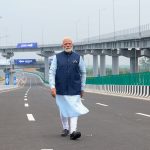



More Columns
I Missed A Flight Thanks To Robert Redford, Plus He Took My Magazine! Alan Moore
Robert Redford (1936-2025): Hollywood's Golden Boy Kaveree Bamzai
Surya and Co. keep Pakistan at arm’s length in Dubai Rajeev Deshpande